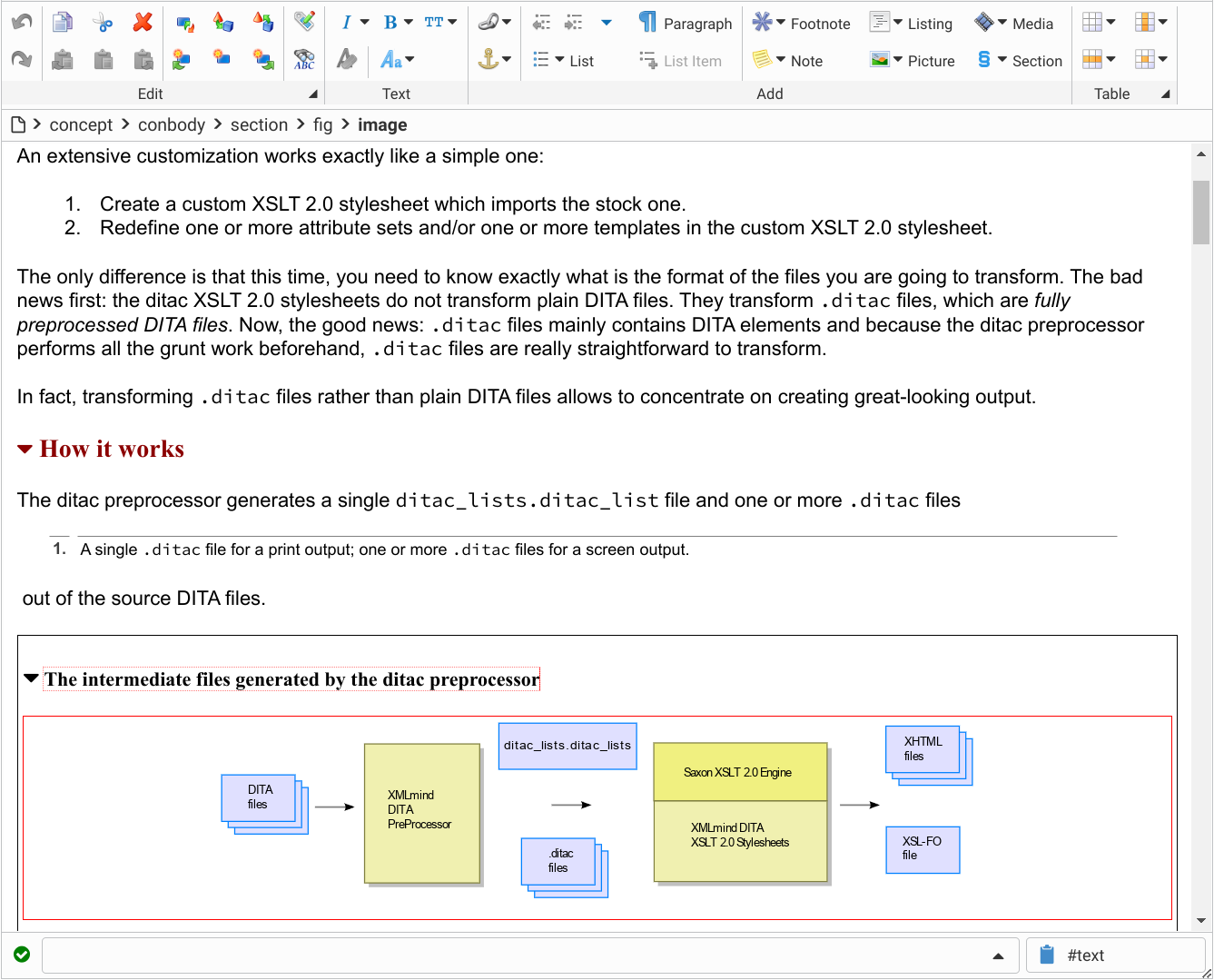| |
<concept> opened in
XXEW
| Desktop Application | Web Edition | ||
|
Requires installing the application on the user's
computer. (No need to install Java™. A
private Java runtime is included in most software
distributions.)
|
More about all these requirements in Chapter 2. How it works.
|
||
|
Multiple document user interface, adapted to authoring
large, complex, modular, documents, including DITA maps or
DocBook assemblies.
|
Single document user interface, adapted to authoring
topics, articles, chapters, sections, etc.
|
||
| No restrictions related to “local files”. | When editing a document stored in a file which is local
to the computer running the web browser, XXEW cannot
render image references (e.g. DITA <image
href="..."/>) and cannot transclude element
references. The reason is that, for security reasons, a web
browser gives a web application very little access to the local
file system. |
||
| Multiple views of the document being edited may be displayed side by side. These views are the tree view, styled views (each view being specified using a different CSS stylesheet), with or without visible tags, and the XML source view. | Only a single view of the document being edited is displayed at a time. It's possible to switch between the tree view and one of the styled views. Visible tags are not supported. The XML source view is not supported. | ||
Spell checking is
@lang/@xml:lang aware and
automatically switches between dictionaries. |
Spell checking is implemented by the web browser, which is not convenient to use in the context of multi-lingual documents. | ||
| Has advanced import DOCX, paste from MS-Word and paste from web browser facilities. Can convert XML to a variety of formats (PDF, Web Help, EPUB, RTF, ODT, DOCX, etc.) | Has no import or export facilities. | ||
| Has CJK (Chinese, Japanese, and Korean) support. Has right-to-left writing (Arabic, Persian, Hebrew, etc) support. | Typing text using a CJK Input Method Editor (IME) works but has limitations and bugs(1). No right-to-left writing support. | ||
| Is also a MathML |
MathML rendered on screen (by the web browser), but editable only using the tree view. | ||
| On Linux, the X Window Primary Selection |
On Linux, the X Window Primary Selection is not natively
supported by XXEW. This differs from HTML
<input type="text"> and
<textarea> and may be surprising for the
user of the web browser. However, an optional —crude— emulation
is available and works on all platforms. |
| (1) | For example, it's not possible to replace the text selection simply by tying text using the IME. |